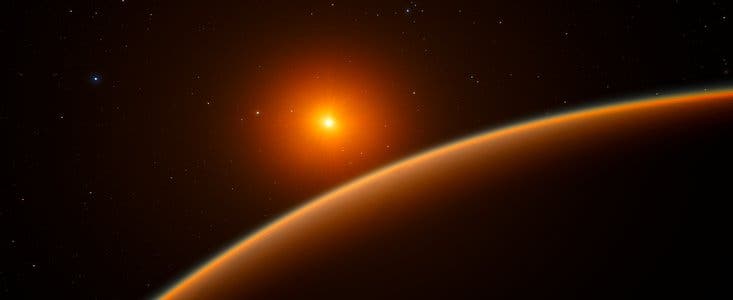The last six months have never been more exciting for exoplanet hunting. First, the was the report of Proxima b — a rocky, Earth-like planet whose orbit around a star only 40 trillion kilometers away allows for liquid water to form on the surface. Then, to much fanfare, NASA announced the discovery of not one, not two, but seven Earth-sized planets in the TRAPPIST-1 system, which lies just 39 light-years from Earth. Three TRAPPIST planets are considered potentially habitable. Now, astronomers working at the European Southern Observatory (ESO) report finding what looks like the best candidate yet for finding alien life.

“This is the most exciting exoplanet I’ve seen in the past decade,” said lead author Jason Dittmann of the Harvard-Smithsonian Center for Astrophysics (Cambridge, USA). “We could hardly hope for a better target to perform one of the biggest quests in science — searching for evidence of life beyond Earth.”
The newly found exoplanet orbits around a red dwarf star only 40 light-years away from Earth, just a hair farther away than the TRAPPIST-1 system. It was discovered using the HARPS instruments at the La Silla 3.6m telescope, in conjunction with other land-based telescopes from around the world.
Astronomers call the exoplanet orbiting the faint star LHS 1140 a ‘super-Earth’ because it’s 1.4 times larger and has a mass seven times greater than our own planet. Given its density, the planet must be made of rock and likely has a very hefty iron core. Every 25 days, the exoplanet makes a complete revolution around its parent star, unlike Earth which needs 365 days.
LHS 1140 is a dim dwarf in the constellation Cetus also known as the Sea Monster constellation. Although red dwarfs are much smaller and cooler than the sun, LHS 1140b exoplanet makes up for it by orbiting ten times closer to its parent star than Earth orbits the sun. It receives roughly half as much sunlight as Earth gets from the sun but even so LHS 1140b orbits in the ‘Goldilocks zone’ — a habitable sweet spot where conditions are not too cold and not too hot for liquid water to form on the surface of the exoplanet.
“The present conditions of the red dwarf are particularly favourable — LHS 1140 spins more slowly and emits less high-energy radiation than other similar low-mass stars,” explains team member Nicola Astudillo-Defru from Geneva Observatory, Switzerland.
Though usually dim later in life, red dwarfs burn brightly when they’re young and are known to emit powerful radiation that can damage the atmosphere of neighboring planets. Due to its large size, astronomers posit that a large magma ocean must have existed on the exoplanet’s surface for millions of years. This mega hot lava could have fed steam into the atmosphere even long after the dwarf star calmed down and settled for a dimmer glow. Though semi-speculative, this means there could be self-replenishing water even to this day, the scientists report in Nature.
We’ll know more about the true nature of this 5-billion-year-old exoplanet once astronomers from NASA and ESA working with the Hubble Space Telescope will assess exactly how much radiation hits LHS 1140b. If the planet gets bombarded by too much high-energy radiation, at least we know to look elsewhere for alien life. Otherwise, scientists can use the upcoming ESO Extremely Large Telescope to make even more detailed observations about LHS 1140b’s atmosphere.
It’s a great run for exoplanet hunting and every month there seems to be a ‘breakthrough’ announcement. These are certainly exciting times to be alive.






